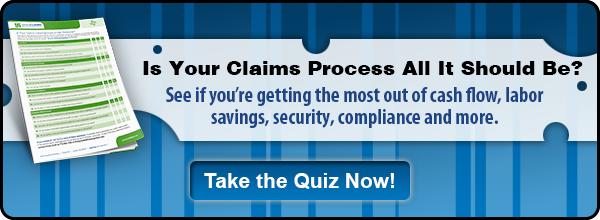 For CFOs, the bottom line matters, whether it’s the P&L or identifying what’s in the bank. Occasionally, though, it does help to know within the context of “what’s in the bank,” how the money gets there. Since Medicare Part A is a significant revenue source, being aware that just submitting a claim for Part A-covered days-of-service may not be enough can be helpful to supporting the organization’s efforts to create an impediment-free flow of cash to the bank.
For CFOs, the bottom line matters, whether it’s the P&L or identifying what’s in the bank. Occasionally, though, it does help to know within the context of “what’s in the bank,” how the money gets there. Since Medicare Part A is a significant revenue source, being aware that just submitting a claim for Part A-covered days-of-service may not be enough can be helpful to supporting the organization’s efforts to create an impediment-free flow of cash to the bank.
Let’s take a closer look at the obvious. Assuming the resident meets all the Part A eligibility requirements and that he or she receives Medicare-coverable services, the Medicare MAC will pay the entire amount of the RUG-determined per diem for the first 20 days of the spell of illness. The “rub” is who pays for the coinsurance for the remaining days of qualified services from the 21st day onward? This is where the secondary payer comes in and, potentially, the headaches.
Introduction
Secondary claims, if not properly handled (and I mean filed electronically, not manually – more about that in a moment) can slow up cash flow. “A claim is a claim, isn’t it?” Nope. "Well, I’ve got the staff and I am certainly paying enough for them to process the claims. They know what they’re doing.” Yes, but because of the intricacies of submitting the secondary claim after receiving payment from the primary payer, providers can and often do see a delay in payment or no payment at all. “But why?” you may ask.
A little background
Once Medicare pays the claim, the MAC may through a coordination of benefits agreement automatically forward the secondary claim to the secondary payer. But not in all cases. Only if the secondary payer pays a fee for such services. The secondary payer can be a commercial insurance (Medi-Gap) or Medicaid. In some states, Medicaid secondary payer claims will cross over automatically. However, even if the state automatically processes the secondary claim, some states do not pay the entire coinsurance amount.
In those cases where the secondary payer does not pay the fee for Medicare to automatically forward the secondary claim, the provider’s Central Billing Office or AR staff or Billers will have to identify, process, submit, monitor, and intervene as needed to collect the secondary payer payment. They can do this manually (Really?) or electronically (Get with the program, folks.).
Manual or electronic processing – showing our bias
Let’s look at the two alternatives.
Paper-based secondary claims – This process is as old as dirt. Because there are many nuances to the process and opportunities for omissions, errors, and procrastination, it creates delays. The billing department receives notices of payment from the primary payer. Then billers have to print the UB04, attach the claim level, related remittance advice, and mail or fax these papers to the secondary payer. The manual method usually requires a tickler file, likely an accordion file with 30 slots in which to place copies of the submitted documents for follow-up. On the follow-up day, the biller places a call to the payer. Unfortunately, it’s not unusual for the payer to not have a record of the submission. So the biller will have to resubmit the claim again and move the claim documentation further back in the accordion file.
Oh, and here is another possible “...grant me the serenity to accept the things I cannot change…” moment. Some secondary payers require a 15-30-day waiting period before a provider can resubmit the claim. How’s that for taking the starch out of your shirt?
Because preparing, filing, and following up on secondary payer claims can engender procrastination, it's easy to lose track of the secondary payer claims. This can result in further payment delays or no payment at all, if the submission takes place outside the allowable filing window (sometimes 90 days to a year).
Electronic claims – the aspirin of secondary claims processing
Processing secondary payer claims electronically through a clearinghouse is as fast and easy to follow as this paragraph. Because the process of claims preparation to submission to follow-up to payments is automated, it gets the job done faster. It also helps to reduce the staff hours consumed when processing claims manually. Word to the wise, “Use the technology at hand.”
What can a CFO do?
The bottom line looks much healthier, because the provider electronically processes not only primary payer claims, but secondary claims as well. It’s certainly one less headache.
And that makes cents.
/Prime-Care-Technologies-Logo.png?width=191&height=55&name=Prime-Care-Technologies-Logo.png)



/PCT-Trans.png)

